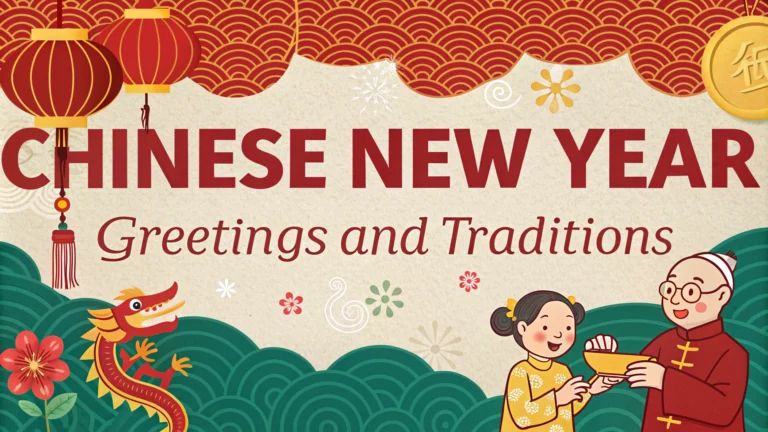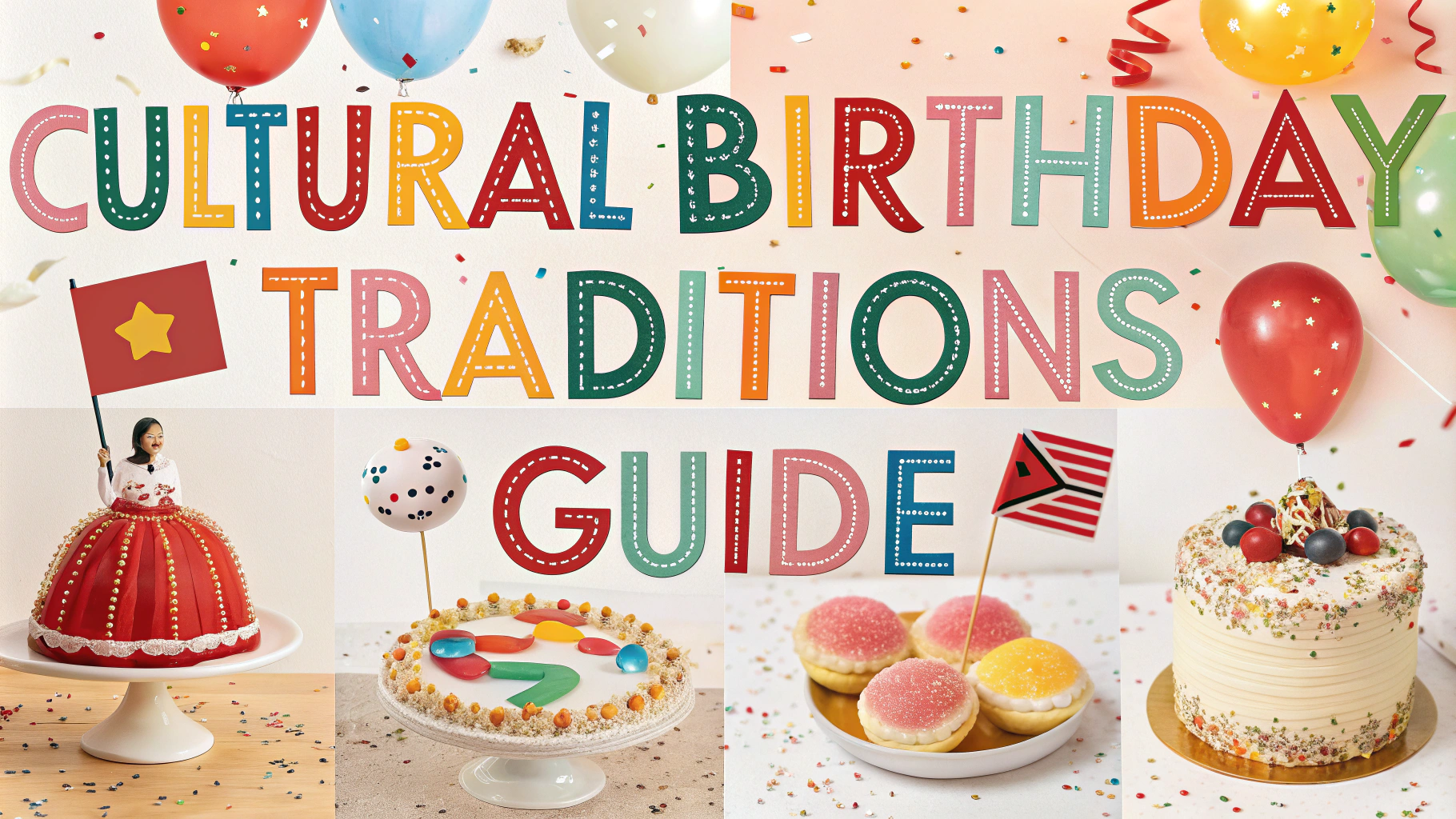Chinese New Year greetings and traditions carry deep cultural significance and bring families together during this most important festival in Chinese culture.
Traditional Chinese New Year Greetings
“Gong Xi Fa Cai” (恭喜发财) – wishing you prosperity and wealth – stands as the most common greeting during Chinese New Year.
- “Xin Nian Kuai Le” (新年快乐) – Happy New Year
- “Wan Shi Ru Yi” (万事如意) – May all your wishes come true
- “Shen Ti Jian Kang” (身体健康) – Wishing you good health
- “Bu Bu Gao Sheng” (步步高升) – Wishing you advancement in career/studies
Key Traditions
Red envelopes (hong bao 红包) filled with money are given to children and unmarried adults as symbols of good fortune.
Essential Red Envelope Etiquette:
- Use crisp, new bills
- Avoid amounts containing ‘4’ (sounds like ‘death’ in Chinese)
- Give with both hands
- Present to children after greeting elders
Home Decorations
Families decorate their homes with red lanterns, door couplets (春联), and paper cutouts (窗花) to welcome good fortune.
Common Decorative Elements:
- Door Gods (门神) – protect the household
- Fu character (福) – represents good fortune
- Kumquat trees – symbolize wealth
- Plum blossoms – represent resilience
Food Traditions
Certain foods are eaten during Chinese New Year for their symbolic meanings and pronunciations that sound like lucky words.
| Food Item | Symbolism |
|---|---|
| Dumplings (饺子) | Wealth and prosperity |
| Fish (鱼) | Surplus and abundance |
| Spring Rolls | Wealth and fresh starts |
| Tangerines | Good luck and fortune |
Modern Adaptations
Digital red packets through apps like WeChat and Alipay have become popular alternatives to traditional paper ones.
Digital Red Packet Tips:
- Set reasonable amounts
- Include personalized messages
- Check recipient’s digital wallet compatibility
- Consider elderly relatives who prefer traditional methods
Remember to respect local customs and family traditions while celebrating Chinese New Year, as practices can vary by region and family.
Family Reunion Customs
The reunion dinner (年夜饭) on Chinese New Year’s Eve is considered the most important meal of the year.
- Extended family members travel home
- Traditional dishes are prepared together
- Empty seats are set for absent family members
- Multiple generations gather at one table
New Year Activities
Various activities and customs are observed throughout the 15-day celebration period.
Traditional Activities:
- Lion and dragon dances
- Temple visits (拜年)
- Firecracker displays
- New Year markets (年货市场)
Taboos and Superstitions
Certain actions are avoided during the New Year period to prevent bad luck.
What to Avoid:
- Cleaning on New Year’s Day (sweeping away good luck)
- Using scissors or knives (cutting off fortune)
- Wearing black or white clothing
- Breaking objects
Conclusion
Chinese New Year remains a vibrant celebration that balances traditional customs with modern practices. While technology and globalization have introduced new ways of observing the festival, core values of family unity, respect for elders, and hopes for prosperity continue to define this important cultural celebration.
Key Takeaways:
- Maintain balance between tradition and modern practices
- Focus on family relationships and respect
- Preserve cultural significance while adapting to contemporary life
- Share cultural understanding across generations
FAQs
- What are the most common Chinese New Year greetings in Mandarin?
The most common greetings are “Gong Xi Fa Cai” (恭喜发财) meaning “Wishing you prosperity,” and “Xin Nian Kuai Le” (新年快乐) meaning “Happy New Year.” - How long does Chinese New Year celebration last?
Chinese New Year celebrations traditionally last for 15 days, starting from Chinese New Year’s Eve to the Lantern Festival on the 15th day of the first lunar month. - What is the significance of red envelopes (hongbao) during Chinese New Year?
Red envelopes containing money (hongbao) are given to children and unmarried adults as a symbol of good luck and blessing. They represent the transfer of fortune and prosperity. - What should you not do during Chinese New Year?
Avoid cleaning or sweeping on New Year’s Day as it’s believed to sweep away good luck, don’t use scissors or sharp objects, and refrain from saying negative words or breaking things. - Why do people wear red during Chinese New Year?
Red is worn because it symbolizes good fortune, happiness, and prosperity in Chinese culture. It’s also believed to ward off evil spirits and bad luck. - What are traditional foods eaten during Chinese New Year?
Traditional foods include dumplings (jiaozi), spring rolls, fish (for prosperity), glutinous rice cakes (nian gao), and long noodles (symbolizing longevity). - What is the significance of firecrackers during Chinese New Year?
Firecrackers are set off to drive away evil spirits and bad luck, while also creating a festive atmosphere. They were traditionally believed to wake the dragon who would bring spring rain. - How should you prepare your house for Chinese New Year?
Houses should be thoroughly cleaned before the New Year, decorated with red lanterns and spring couplets (chunlian), and filled with flowers like plum blossoms or bamboo plants. - What is the meaning of “reunion dinner” during Chinese New Year?
The reunion dinner (年夜饭) on New Year’s Eve is the most important meal of the celebration, where family members gather to share food and strengthen family bonds. - Why is the zodiac animal important for each Chinese New Year?
Each year is associated with one of 12 zodiac animals in rotation. The zodiac animal is believed to influence the year’s fortune and characteristics of people born in that year.







